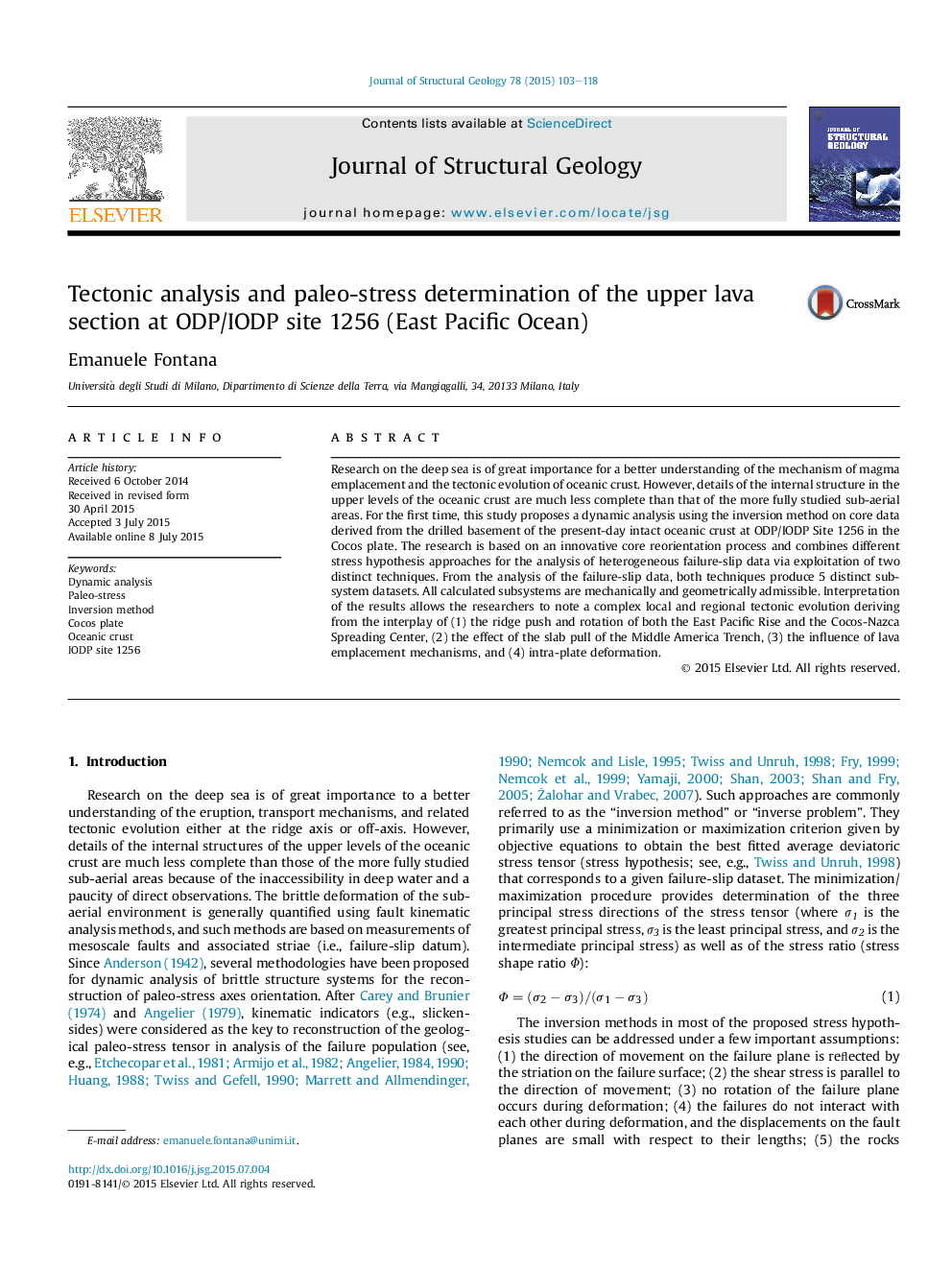| Article ID | Journal | Published Year | Pages | File Type |
|---|---|---|---|---|
| 4733012 | Journal of Structural Geology | 2015 | 16 Pages |
•Dynamic analysis performed on the basement of the intact oceanic crust.•The paleo-stress determination uses kinematic indicators measured on core structures.•This study reveals the relationships between detected phases, regional implications and local features.•It is possible to “read” the plate evolution from a single submarine lava body.
Research on the deep sea is of great importance for a better understanding of the mechanism of magma emplacement and the tectonic evolution of oceanic crust. However, details of the internal structure in the upper levels of the oceanic crust are much less complete than that of the more fully studied sub-aerial areas. For the first time, this study proposes a dynamic analysis using the inversion method on core data derived from the drilled basement of the present-day intact oceanic crust at ODP/IODP Site 1256 in the Cocos plate. The research is based on an innovative core reorientation process and combines different stress hypothesis approaches for the analysis of heterogeneous failure-slip data via exploitation of two distinct techniques. From the analysis of the failure-slip data, both techniques produce 5 distinct subsystem datasets. All calculated subsystems are mechanically and geometrically admissible. Interpretation of the results allows the researchers to note a complex local and regional tectonic evolution deriving from the interplay of (1) the ridge push and rotation of both the East Pacific Rise and the Cocos-Nazca Spreading Center, (2) the effect of the slab pull of the Middle America Trench, (3) the influence of lava emplacement mechanisms, and (4) intra-plate deformation.
